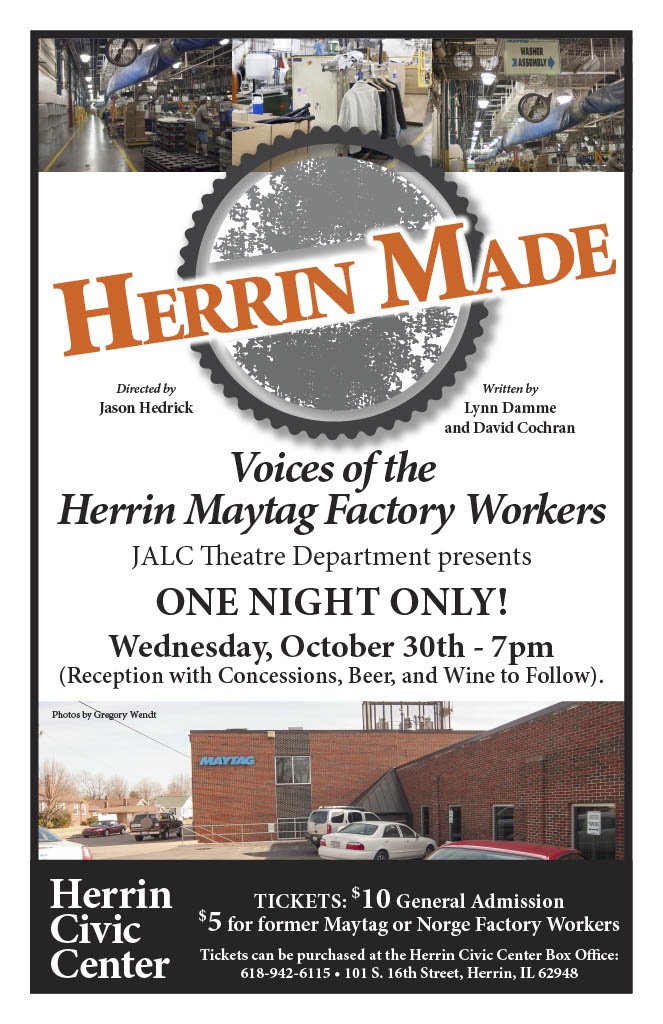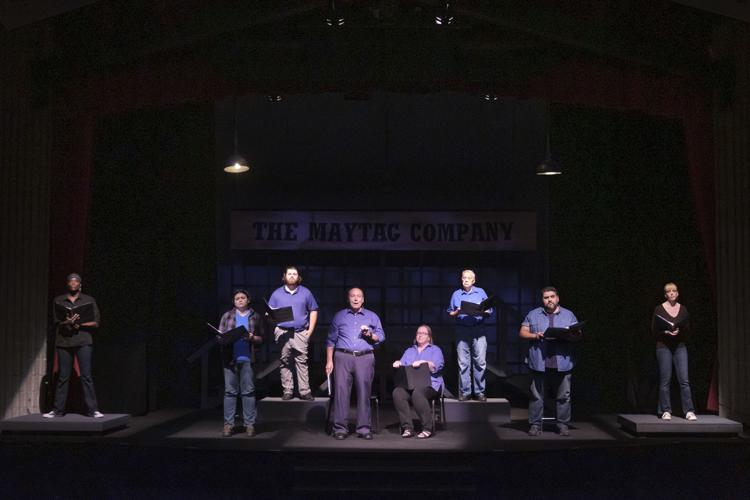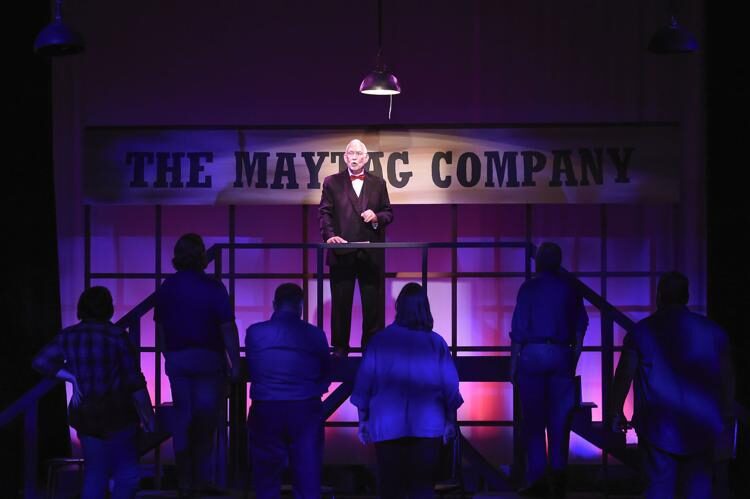Herrin Made was a play written and performed in the United States’ deeply rural area of Southern Illinois, a region composed of small towns such as Carbondale, Carterville, and Herrin. It was created by local artists in collaboration with past-workers from a local factory, now closed, that made Maytag appliances. This collaboration enabled the community to create a piece about itself, to acknowledge its history, and to use theatre to think through the present situation: the Maytag plant shut down, industry in Southern Illinois is declining in general, and the wide-spread issue of factory jobs being lost throughout the United States.
Herrin Made was written by Southern Illinois playwright Lynn Damme and David Cochran, a history professor at Carterville’s John A. Logan Community College. The production’s premiere was in September of 2019 at the John A. Logan Theatre Department as part of their 2019-20 season that focused on staging the work of local playwrights. On October 30, 2019, the evening I saw the performance, it was a special event, offered for one night only, at the Herrin Civic Center, in Herrin, IL.
A work of verbatim theatre, the material for the production was sourced by interviews taken from former Maytag factory workers conducted by David Cochran, starting in 2012.
The Maytag factory, based in Herrin, IL, closed down in December of 2006, causing the loss of many jobs and radically changing the lives of the laid-off workers.

In the program notes Cochran shared how he conducted the interviews. “I met with former Maytag factory workers in homes or at my office, in restaurants or at bars and while we ate breakfast or pie or drank cups of coffee or split pitchers of beer.”
This work of ethno-theatre explores the experience of former employees of the Herrin Maytag Factory. The play details the challenges they faced, such as dangerous working conditions, the effects of performing repetitive tasks on their bodies, and the difficulties many of them faced after the factory closed down.
Prior to the start of the show, the audience could explore the lobby of the Herrin Civic Center, where there was an exhibition of artifacts and information about the history of Maytag in Herrin, IL.
The production was presented as readers’ theatre, with the community actors performing the script from binders. The lighting design was minimal. The production was performed by a cast of eight.
There was a particularly strong performance by Charlie Hope Dorsey who played Worker 6. Dorsey’s vibrant performance brought to life the uniquely challenging experience of a black woman working at Maytag.

Photo by Jared Gravatt.
Herrin Made was directed by John A Logan Theatre professor, Jason Hedrick. Hedrick’s staging was straightforward, but enhanced the storytelling of the script, giving each performer the opportunity for their voice to be amplified and take center stage. Actors sat, positioned around the stage, and stood when they performed their sections.
When finished, the production received a standing ovation by the community in attendance. After the cast’s curtain call, former Maytag factory workers were invited to take a bow on stage. Much of the audience flowed onto the stage, as dozens of folks headed to the front to bow together and receive warm applause from the remaining audience.
After the Maytag workers had taken their bow, there was a short post-show performance; live music, written and performed by Matt Garrison, a musician in Carbondale. Life on the Line, performed on acoustic guitar, was inspired by the experience of Maytag factory workers. The performance was accompanied by a slide show of photographs depicting Maytag factory workers, compiled by Gregory Wendt, a staff member at Southern Illinois University, Carbondale, whose focus is on video, film, photography, and design.
After the performance, there was a reception in the lobby, to give former Maytag workers and audience members alike a space to reflect and mingle.
Overall, Herrin Made was a strong activist theatre production that connected with and reflected the history of the audience. The piece additionally personalized the plight of rural America as factory jobs continue to decline around the country.
This post was written by the author in their personal capacity.The opinions expressed in this article are the author’s own and do not reflect the view of The Theatre Times, their staff or collaborators.
This post was written by Lavinia Roberts.
The views expressed here belong to the author and do not necessarily reflect our views and opinions.


















